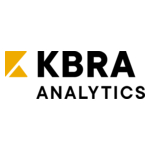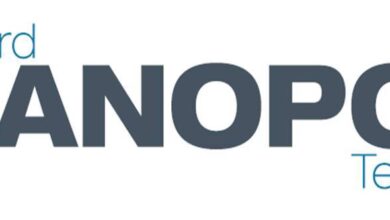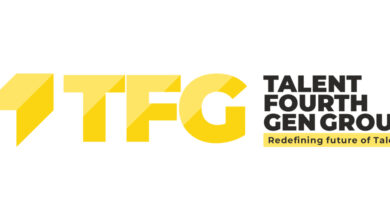KBRA Analytics Releases The Bank Treasury Newsletter, the Bank Treasury Chart Deck, and Bank Talk
NEW YORK–(BUSINESS WIRE)–#KBRA–KBRA Analytics releases this month’s edition of The Bank Treasury Newsletter, the Bank Treasury Chart Deck, and Bank Talk.
This month’s newsletter reviews key bank treasury takeaways from Q3 2022 bank earnings results. The quarter was filled with surprises on the upside, given the 150-basis point hike in rates over two meetings of the Federal Open Market Committee (FOMC), with more expected in Q4 2022. Bank treasurers reported their mix of noninterest-bearing deposits to total deposits, at a record high, remains unchanged, and some reported that balances were even higher in Q3 2022 than in Q2 2022. In addition, despite the economic storm clouds on the horizon, bank treasurers are reporting healthy loan growth and remain optimistic about replacing bonds with loans in their interest-earning asset mix into next year. Bank treasurers that do not have loans to fund have mostly stayed short in bonds or deposited their excess cash at the Fed. Bank treasurers that have added bonds in the last year—and incurred negative accumulated other comprehensive income (AOCI) that sliced into their tangible common equity (TCE) ratios—have shrugged off the accounting entry as noise and projected they would earn back the negative marks over five to seven years.
The newsletter also reviews the Fed’s progress in shrinking its balance sheet under quantitative tightening (QT), which has been hampered by the negative convexity in its Agency mortgage-backed security (MBS) portfolio. Despite the Fed’s efforts to date to shrink its balance sheet, the Treasury announced it may launch a Treasury buyback program, which, given the $24 trillion of Treasurys outstanding, could match the size of runoffs from QT. Meanwhile, money supply remains over $20 trillion, compared to $4 trillion before COVID. Depositors have begun to shift into money market funds, reflected in a $137 billion decline in M1, which includes demand deposits, mostly offset by a $107 billion increase in retail money market funds included in M2.
The Bank Treasury Chart Deck studies the effect of negative AOCI on bank TCE ratios on a state-by-state basis, estimating the number of institutions that could find themselves with negative capital ratios due to a more than 30-year-old accounting rule that marks the asset side but not the liability side of bank balance sheets to market. The analysis found that on average, the adverse mark-to-market on their available-for-sale (AFS) securities sliced their capital ratios in half. Also, the number of institutions with negative TCE ratios was less than a dozen at the end of Q2 2022 but could certainly grow in Q3 2022, and also through Q4 2022 if the Fed follows through on its threats to raise rates to fight inflation. The second half of the deck estimates how much further TCE ratios could fall, looking at the 10-Year Treasury yield and mortgage rates, as well as recent investment flows into Treasurys by banks and individuals.
In Bank Talk, Van Hesser and Ethan Heisler revisit the ramifications of unrealized losses in bank securities portfolios. They look at how the divergent treatment of AOCI by the Federal Housing Finance Agency (FHFA) and bank regulators may have created a headache for some institutions that reported negative TCE ratios in Q2 2022 thanks to the move up in rates. While Van reminds Ethan that regulatory capital lets most banks exclude AOCI, Ethan explains to Van a technicality in federal guidelines for Federal Home Loan Banks (FHLB) advances concerning institutions with negative TCE, and why a problem that should be easily fixable will not likely be addressed any time soon. The two discuss how at the end of Q2 2022, the issue was very limited, but the number of institutions that might run into trouble with negative TCE could grow if the Fed continues to aggressively raise rates. Concluding on a positive note, Ethan tells Van that banks that have cash to put to work in bonds—and that want protection for net interest margins, should the Fed turn around next year and cut rates—have a buying opportunity in discounted Agency MBS. He also notes that negative AOCI will certainly bleed back into earnings as bonds accrete to par.
Click below to view the reports:
- The Bank Treasury Newsletter Chart Deck: October 2022
- Bank Talk: October 2022
- The Bank Treasury Newsletter: October 2022
About KBRA Analytics
KBRA Analytics, LLC (KBRA Analytics) is our premier product platform for high quality data and advanced analytics. Our seasoned teams of industry specialists across each product provide unparalleled insight creating a foundation of deeper analysis and rapid discovery for users. KBRA Analytics is an affiliate of Kroll Bond Rating Agency, LLC (KBRA). KBRA is a full-service credit rating agency registered in the U.S., designated to provide structured finance ratings in Canada, and with credit rating affiliates registered in the EU and UK.
Contacts
Ethan M. Heisler, CFA
Strategy
+1 (516) 359-0975
[email protected]
Van Hesser
Strategy
+1 (646) 731-2305
[email protected]





